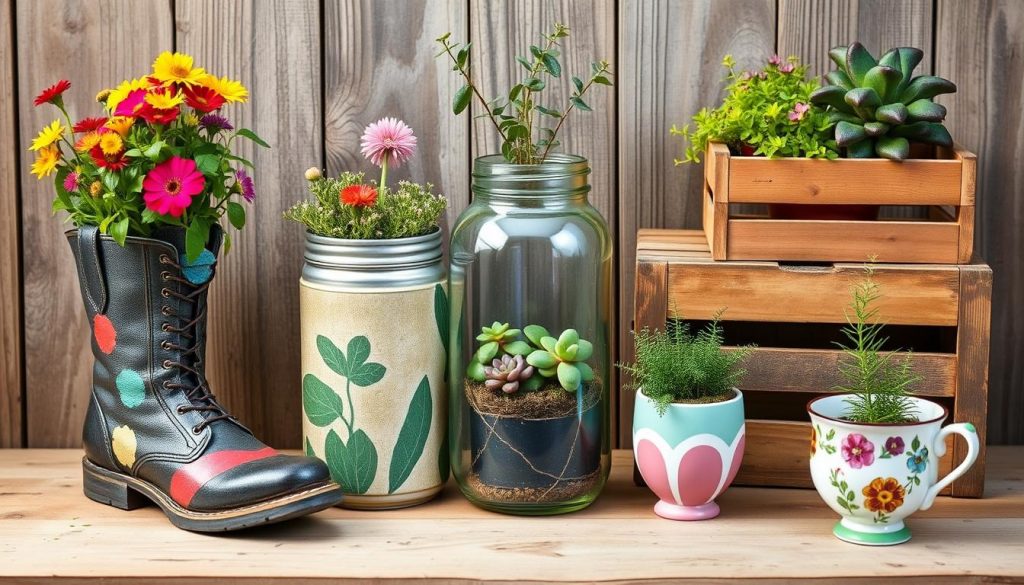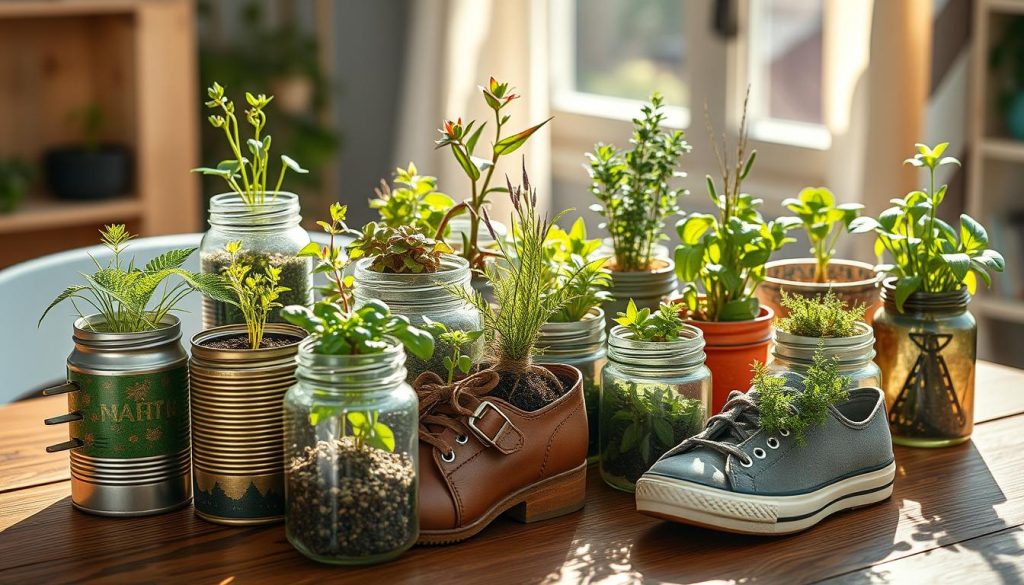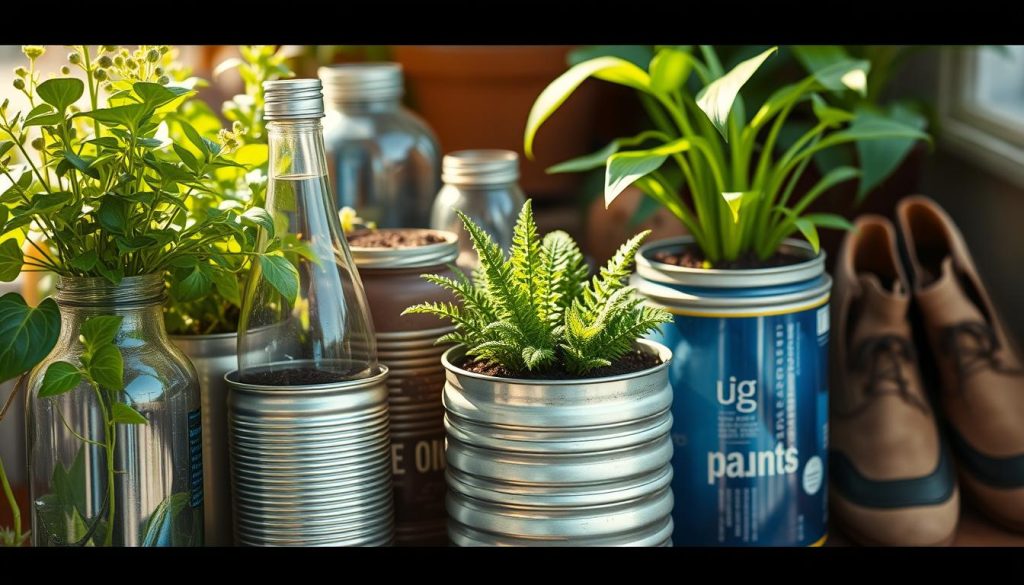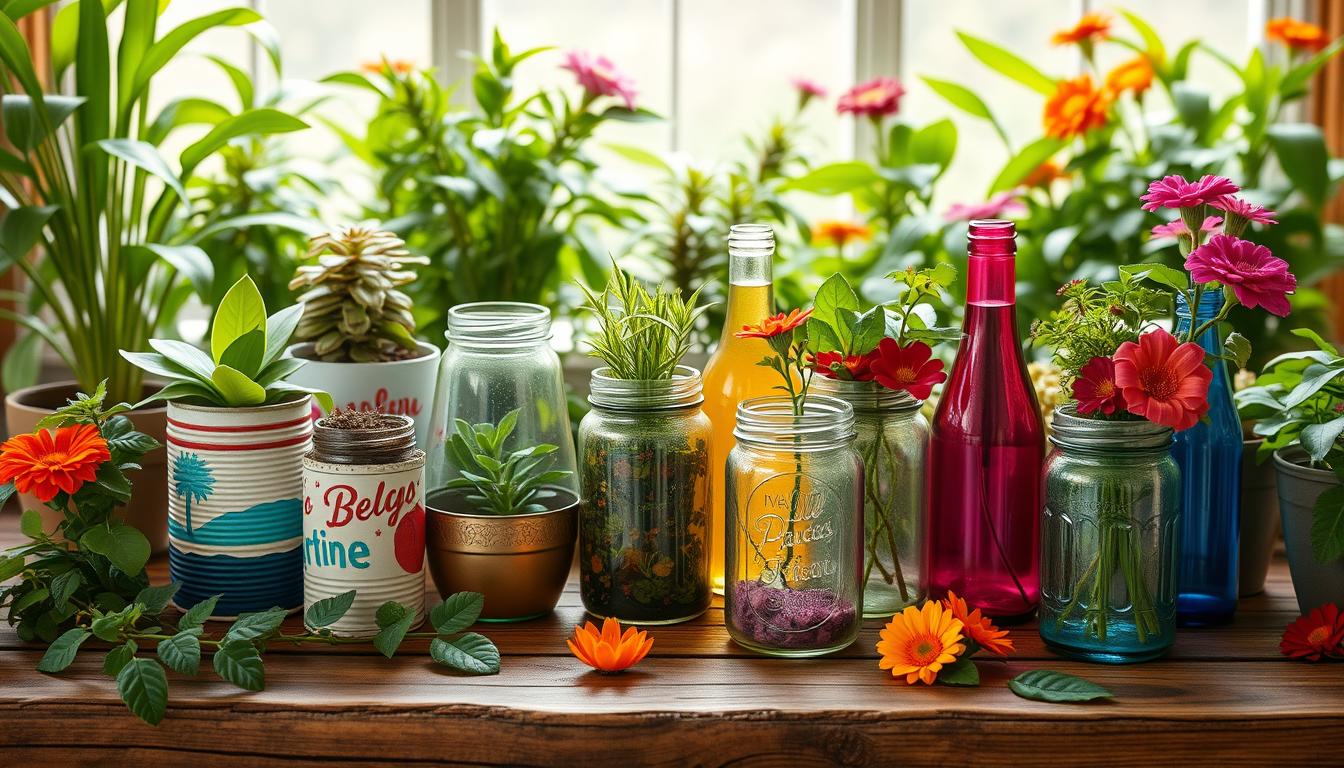I love making unique items for my home. That’s why I’m excited to share my DIY planter project. It’s a fun way to add a personal touch and be eco-friendly. With simple materials, you can make your own planters that beautify any space.
DIY planters are a fun and affordable project. They let you think creatively and use items like old containers or bottles. It’s perfect for those who want to reduce waste and create something beautiful.
By making your own planters, you can create a space that shows off your personality. It’s not only cheap but also helps the environment by reusing items. In this article, I’ll show you how to make your own planters and share tips to get you started.
Why DIY Planters?
Exploring creative indoor gardening, I found many benefits in making my own planters. It’s a way to reduce waste and show off my style with unique planters. Using old items, I create something special that matches my taste and makes my space more personal.
DIY planters have changed my gardening hobby for the better. It’s good for the planet and lets me be creative. With a bit of imagination, I turn old things into beautiful planters that make my plants stand out.
Benefits of Creating Your Own Planters
- Reduces waste by repurposing household items
- Allows for creative expression and personalization
- Cost-effective alternative to buying planters
Eco-Friendly Choices
Choosing DIY planters is an eco-friendly move. It helps reduce the need for new planters and cuts down on waste. As I keep exploring, I’m excited to find more ways to make my garden better for the planet.

Cost-Effective Gardening
Making my own planters saves me money on gardening. I use items I already have, so I can spend more on plants and tools. It makes gardening fun and affordable.
Materials You’ll Need
To start your DIY planter project, gather common household items. You can use plastic bottles, cardboard tubes, and old containers. Think about how you can turn items you’d normally throw away into unique plant holders.
Choose materials based on the plants you want to use. If the plants will be eaten, pick safe and non-toxic materials. This way, your planters will be creative and safe for your plants.
Common Household Items for Planters
- Plastic bottles
- Cardboard tubes
- Old containers
- Wooden crates
- Fabric scraps
Safety Considerations
When using materials for plants that will be eaten, safety is key. Clean and disinfect all materials before use. Also, avoid harmful chemicals or toxins in your materials.
Tools I Recommend
You’ll need basic tools like scissors, glue, and a drill. These tools will help you turn your household items into unique plant holders.
Preparing Your Materials
To start your eco-friendly planting projects, you need to prepare your materials. This is key to making your garden decor a success. First, I clean all the items I’ve gathered. This removes dirt, grime, and residue from their surfaces.
Then, I make sure my planters have good drainage. I do this by drilling holes in the bottom or adding rocks. This prevents waterlogged soil and root rot. For my projects, I also pick the right soil and plants. Some plants need more drainage than others, so it’s important to know their needs.
Creative Modifications
To make my garden decor unique, I get creative with my planters. I might paint them or use decoupage. I’ve also tried stencils and stickers for different designs. This way, I can show off my personality and style.

Ensuring Success
By following these steps, you’ll be on your way to creating beautiful eco-friendly planting projects. Remember to have fun and be creative with your garden decor. With patience and practice, you’ll soon enjoy your planters. These tips are great for both seasoned gardeners and beginners, helping you create a beautiful outdoor space.
Step-by-Step Guide to Making Planters
You can make your own planters using items from home. This approach helps reduce waste and supports eco-friendly gardening. It’s all about turning old items into new planters.
Here are a few methods to get you started:
- Using plastic bottles: Cut the bottom off a plastic bottle, add soil and your chosen plant, and hang it from a tree or place it on a windowsill.
- Repurposing cans: Clean and poke holes in the bottom of a can for drainage, then add soil and your desired plant.
- Transforming old furniture into planters: Use an old wooden bench or chair as a planter by adding a wooden or plastic container to hold the soil and plants.
These methods are creative and good for the planet. They let you enjoy gardening while being eco-friendly. By following these steps, you can make your own planters and enjoy gardening.

With a little creativity, you can turn any household item into a beautiful planter. Repurposed container gardening is fun and rewarding. So, get creative and start making your own planters today!
Plant Selection and Care
Now that you’ve made your DIY planters, it’s time to pick the right plants. Think about your planter’s climate and conditions. Some plants do well in small spaces, while others need more room.
For DIY planters, start with easy plants like succulents or herbs. They’re great because they’re simple to care for and fit well in small spaces. Use a potting mix that drains well and don’t overwater, as it can harm your plants.
Best Plants for DIY Planters
- Succulents: Perfect for small, enclosed spaces and require minimal care
- Herbs: Great for homemade plant pots and can be used in a variety of dishes
- Flowers: Add a pop of color to your DIY planters and can be easily cared for
Seasonal Considerations
Think about the season and your planter’s conditions when picking plants. For example, choose plants that can handle cold in winter. In summer, pick ones that can stand heat and humidity.
Planting Tips for Success
To make your plants thrive, plant at the right time and care for them well. Water them often but don’t overdo it. Fertilize them now and then to help them grow. With the right plants and care, your DIY planters will flourish and brighten your home.
Personalizing Your Planters
DIY planters let you add your own style. You can make them into art that shows who you are. Whether for indoor gardening or outdoor decor, the choices are endless.
Start by painting or using markers for color and patterns. Stencils can help with designs or quotes. For a rustic vibe, add twine or burlap.
Painting and Decorating Ideas
- Use bright colors to add a pop of color to your indoor space
- Try ombre effects or gradient painting for a unique look
- Add some glitter or sequins for extra sparkle
Adding unique touches like ribbons or bows can make your planters stand out. Try different textures and materials for a unique look. This way, your planters will show off your style and love for gardening.
Adding Unique Touches
DIY planters can become stunning art pieces. Don’t be shy to try new ideas. Personalizing your planters adds warmth and character to your space. It shows your love for gardening and creativity.
Maintenance and Longevity of DIY Planters
With a little care, your homemade planters can last for years. They add a unique touch to your home. To keep them going, focus on watering and feeding your plants right. You might also need to protect them from the weather or too much sun.
When your DIY planters start to wear out, it’s time to think about what to do next. You can repaint, reseal, or even change them into something new. A bit of creativity can make your planters look great for many seasons.

